
5 things to know about Winnipeg’s big sewage problem
115 billion litres, 70 years to fix, $5.5 billion in lawsuits
Get the inside scoop on The Narwhal’s environment and climate reporting by signing up for our free newsletter.
The voices of the singers and the rhythmic beat of the drum fill the powwow arena, as the children dance in the sun on this August afternoon. Looking around the crowded wooden bleachers, I see a smile resting on most faces. All of us are sharing in a moment of pure joy, as we watch the next generation of knowledge holders dance with pride around the circle.
Overhead, an eagle hovers above the young dancers. As a member of the Eagle Clan from the Mississaugas of the Credit First Nation, I don’t take this sight for granted — especially since I live in Toronto, where you don’t see many birds other than pigeons. But this weekend, I am far away from the condos, the traffic and the sirens. My friends and I have taken a road trip to Wiikwemkoong on Manitoulin Island in northern Ontario, to camp out on the powwow grounds for the Annual Cultural Festival.
In the Anishinaabe worldview and cosmology teachings that I have received, the Eagle is respected as a great being in Creation. Because the Eagle soars at high altitudes, it is believed these beings fly the closest to Creator. As such, they are one of our connections to the spirit world, carrying prayers and messages from the physical world.
After the eagle floats above the circle for a few minutes, it soars into the clouds, slowly becoming a dark speck in the sky. I wonder if it’s carrying a message to the spirit world today: letting our ancestors know how many people from different communities across Turtle Island (the land now known as North America), have gathered together today to celebrate. To watch our people dance in their sacred clothing, to listen to our songs and to eat some good powwow grub.
Though powwows originated in the 19th century, Indigenous people have had ceremonial dances and gatherings for centuries. This included gatherings of different nations. Michael Doxtater, a professor at Toronto Metropolitan University who comes from Six Nations of the Grand River, says the gatherings originated as trading events. “They would gather in Detroit, Manhattan, Toronto and Montreal. Where there was a confluence of water ways, where a bunch of the Nations would get together and trade. But they would also have social dances, races, gambling and other things going on there,” Doxtater says. Doxtater is also head of Saagajiwe, a home for participation, action and research in Indigenous creative practices and knowledge that is part of The Creative School of the university. I also work under Doxtater at Saagajiwe as a research assistant and events coordinator.
Trading is still an essential part of powwow culture, but it has also evolved to become a celebration of Indigenous cultural traditions and ways of being. Many elements of the gathering are grounded in our connections with the land, the natural world, our ancestors and our history.
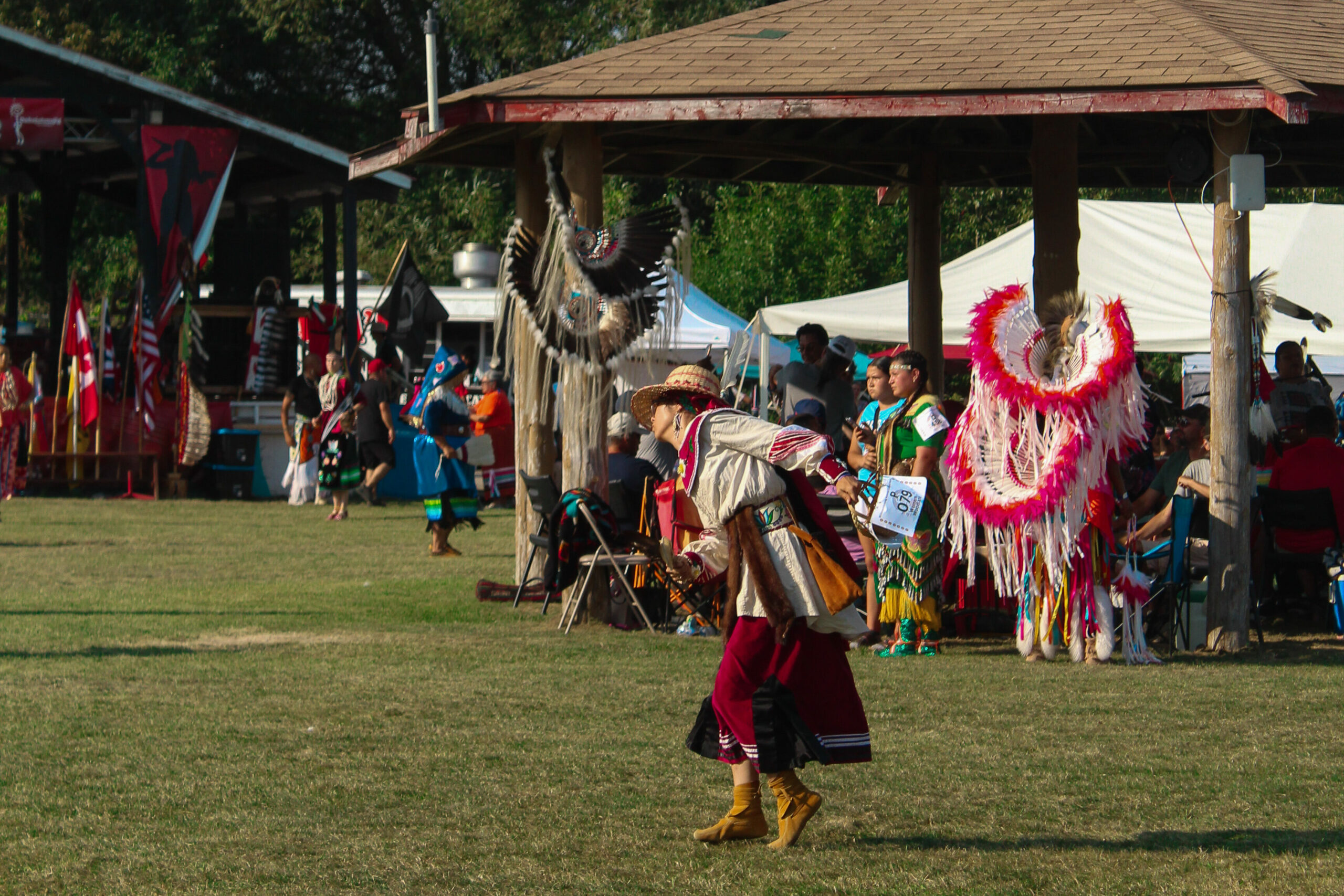
Our revered Eagle relative is present in many forms at Anishinaabe powwows. One or more Eagle staffs lead the grand entry of the powwow, each with its own design but always dressed in sacred feathers. These staffs are often used at ceremonies such as spirit naming ceremonies and seasonal feasts — in powwows they lead the way because they honour community, culture and history, including inviting the ones from the spirit world into the powwow circle. The Eagle is also represented in many dancers’ individual regalia, and each feather holds meaning and significance.
The styles of social dances and traditional dances performed at powwows, vary across Indigenous Nations. This summer, travelling from the GTA, to Walpole, to Six Nations, to Wiikwemkoong, just a small part of the powwow trail, I have seen the Hoop Dance and the Smoke Dance, which are only performed at certain powwows or in certain communities. Each dance has a different origin story and carries different teachings. But all of the dancers that step into the circle dance to the big drum, known as Mother Earth’s heartbeat.

As dances carry cultural meaning and generational history, the dancers carry a responsibility to their communities.
DJ White, a fancy feather dancer from the Potawatomi, Odawa and Ojibwe nations, has travelled across Canada to dance at powwows.
“We’re not just dancing for our physical self, we’re dancing for our spiritual self,” White says. “We’re dancing for our families, our Elders and our babies, who came to be in the present with us, but they don’t get to partake in the dancing [because of] physical limitations. I also dance for the ones who can’t dance, the ones who are yet to come from the spirit world. And for those who have passed on, like some of my friends and my ancestors.”

In the 20 years White has been fancy dancing, the designs and elements of his regalia have evolved he has had to remake all of it twice: once because he outgrew the set he was given when he was younger, then again after his regalia was destroyed in a house fire. Each time, it took him around five years to remake all of the pieces.
White sees regalia as a representation of growth throughout one’s lifetime. “It’s almost like a tree when they add a new layer of bark in their lives,” White says. Some of the original beadwork designs belonged to his big brother, while the beadwork on his cuffs was added later, reflecting something that appeared to him in dreams. “I kind of think of it as a rainbow from the spirit world,” White says.
The colours in his design — black, white, red, yellow — are used in the Ojibwe medicine wheel, a visual representation of many complex cultural and cosmological teachings. Across Indigenous Nations, there are many variations of the medicine wheel and its teachings.
In Ojibwe culture, the four colours each symbolize a sacred direction, a cardinal points on the medicine wheel. But each quadrant also stands for a time of day, a season, one of four sacred medicines, an animal, one of four states of being, and four stages of life. Each element of the different quadrants carries teachings and meanings.
The teachings carry through other elements of a powwow. The wheel’s circular form references the cultural belief that everything and everyone in Creation are connected and valued as equals within the community. Some Indigenous communities gather in a circle for meetings and ceremonies to honour this belief. At powwows, the dancers’ arena is always a circle.
Two spots in the circle that are left open: the eastern doorway and the western doorway, invoking two of the sacred directions in the medicine wheel. Dancers enter the powwow circle through the eastern doorway and exit through the western doorway, to pay homage to the sun.

Indigenous cultural practices and ways of being are intertwined with the natural world. In the Anishinaabe teachings I have received, our people have been the caretakers and protectors of their ancestral lands for time immemorial, following teachings passed down for generations that allowed us to live in harmony with the land and nature spirits.
Land-based knowledge has also shaped the teachings and cultural practices of powwows, including dances. Dances like the men’s prairie chicken dance imitates the rooster’s efforts to attract a hen in mating season. The women’s fancy shawl dance evokes the graceful movements of a butterfly.
However, colonization across Turtle Island led to the oppression of Indigenous Peoples and their cultural practices. Efforts to assimilate Indigenous Peoples began before the Dominion of Canada was even established in 1867. The first church-operated residential school opened in 1831, aiming to replace Indigenous knowledge with colonial and Christian education. In 1857, the Gradual Civilization Act encouraged Indigenous people to give up their Indian Status — including many land-based rights — through a process called enfranchisement. However, not many people were keen on voluntarily assimilating into colonial society.
In an effort to separate Indigenous Peoples from their cultures and remove them from their ancestral lands, colonial legislation became increasingly oppressive and restrictive of First Nations, Mėtis and Inuit Rights. The 1876 Indian Act built upon the Gradual Civilization Act, and made the existing provisions even harsher. This included outlawing Indigenous Ceremonies and traditional dancing. Indigenous Peoples were also restricted from leaving the small lands “reserved” for them by the Crown, while their vast homelands were plundered for valuable natural resources.
Under colonial law and legislation, gatherings like powwows and Potlatch ceremonies that celebrated Indigenous ways of life and strong community relationships were almost always outlawed unless sanctioned by the colonial government. Doxtater tells me that Indigenous Peoples were only permitted to wear their regalia in pageants or Buffalo Bill’s Wild West shows, primarily to entertain settlers. In 1887, after Canada began funding residential schools nationwide, Prime Minister Sir John A. Macdonald said “The great aim of our legislation has been to do away with the tribal system and assimilate the Indian people in all respects with the other inhabitants of the Dominion as speedily as they are fit to change.” Weakening community relationships and destroying the pride that Indigenous Peoples had for their culture and identity was seen as necessary for “successful” assimilation.
By the 1920s, the Indian Act enforced mandatory attendance at residential schools for the children of First Nations, Métis and Inuit families, separating them from their homelands, languages and ceremonies. But while colonial family separation has had devastating impacts on individuals and communities that still continue today, the resilience of Indigenous Peoples has kept many cultural practices alive. The resurgence of powwows and ceremonies began again after the ban was removed from the Indian Act in 1951. In the decades since, Indigenous Peoples have been reclaiming their ancestral spiritual practices, clothing, dances and ceremonies, and every summer, there are thousands of powwows across Turtle Island.
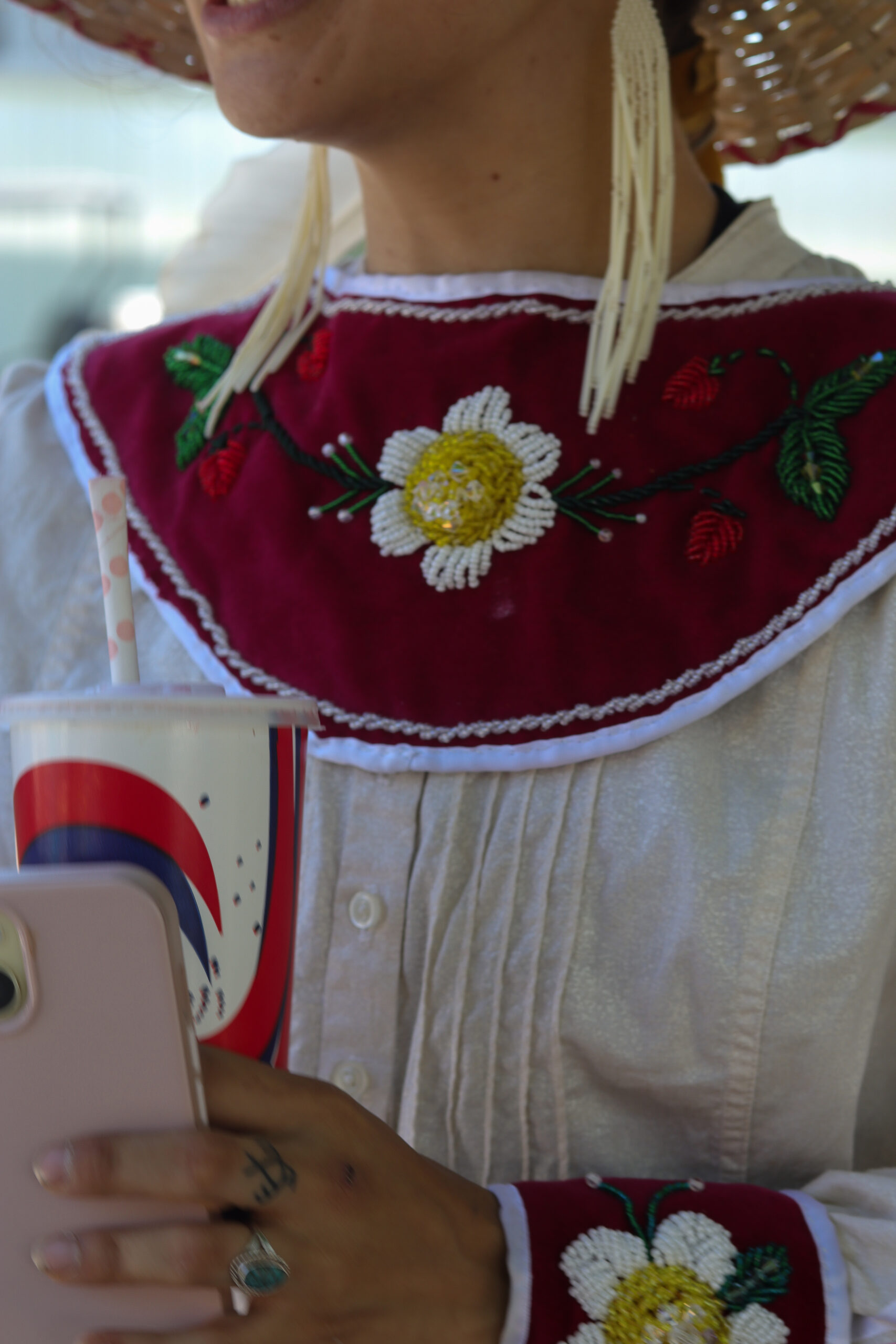
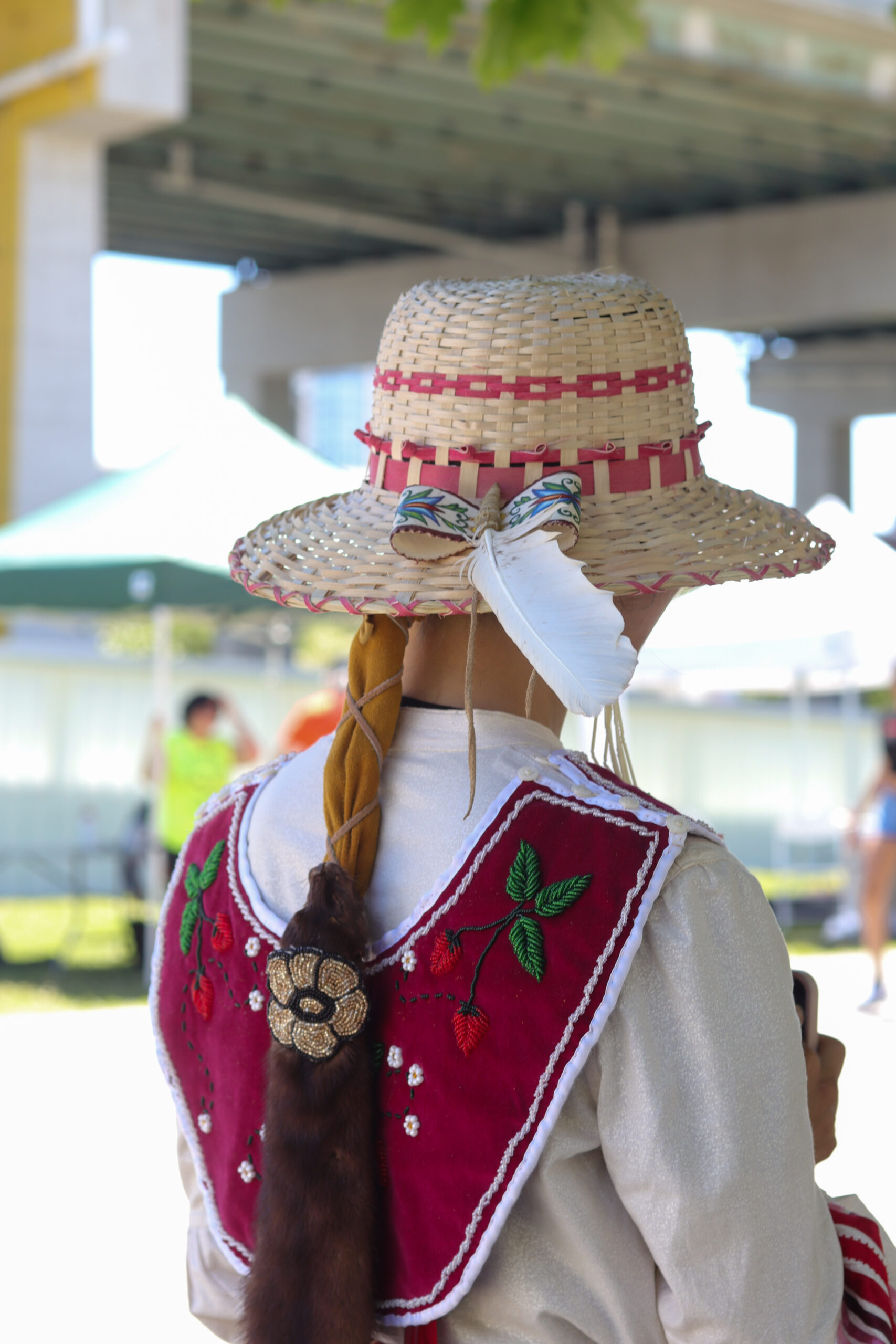
“I like to work on the land and show hunting stories when I dance,” Mary Ann Manatch, a woodland traditional dancer from Wiikwemkoong and Rapid Lake First Nations, says. Their unique dance style also incorporates elements from men’s traditional dance. Manatch said telling stories of animals through dance, connects them to the spirit of those animals.
As I travelled the powwow trail this summer Manatch was one of many of the dancers I spoke to who felt like they were connecting to the land that they dance on. This connection can be very healing for both, as the dancer and the land imbue each other’s beings with spirit.
“When I dance, I feel very emotional. I have always gotten through my emotions through dance,” Alex Jackman, a Mohawk and Algonquin jingle dress dancer, says. Jackman, who is also Bajan, did not find out about her Indigenous ancestry until later in life, and said she finds healing and liberation in dance as she reconnects with her culture.
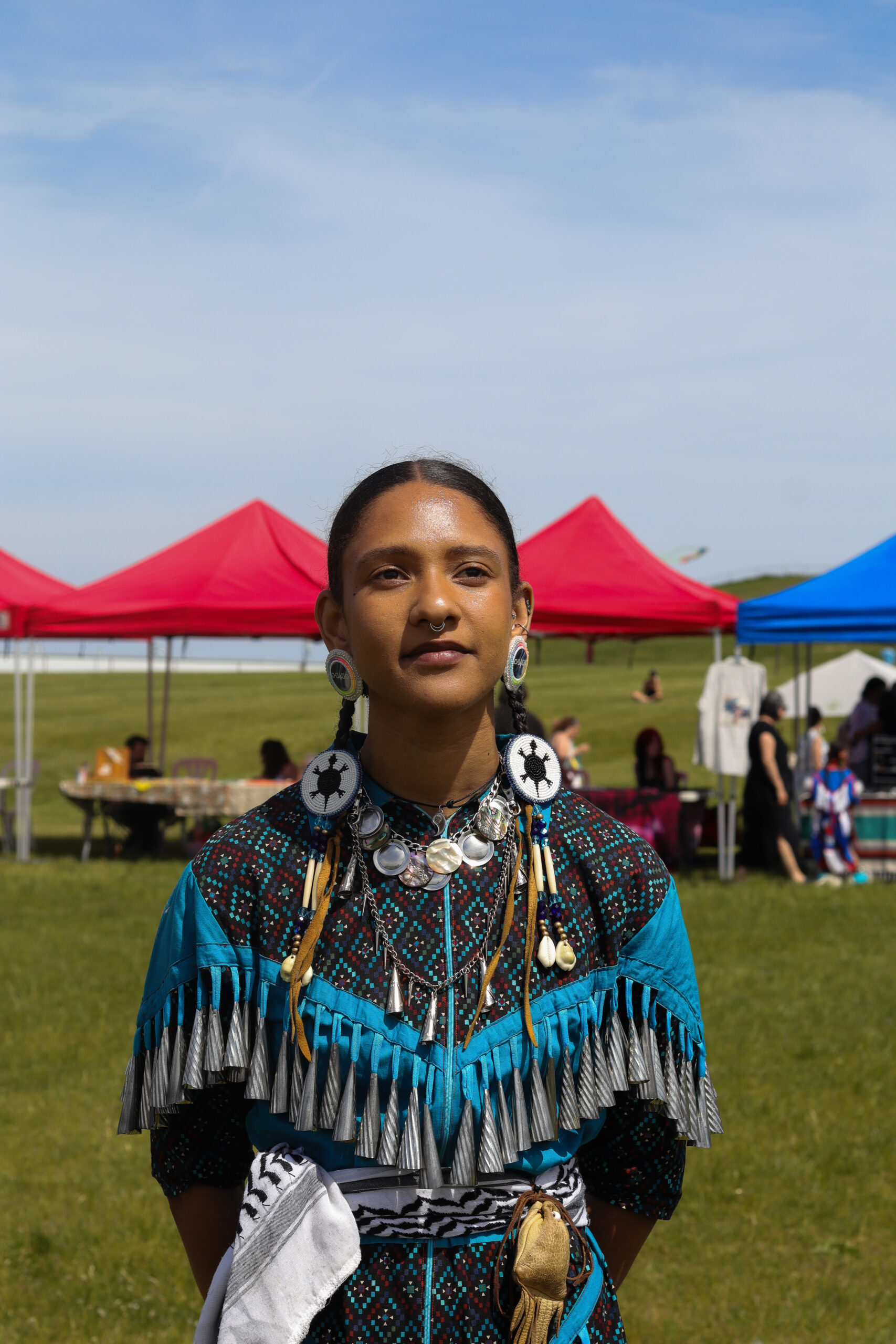
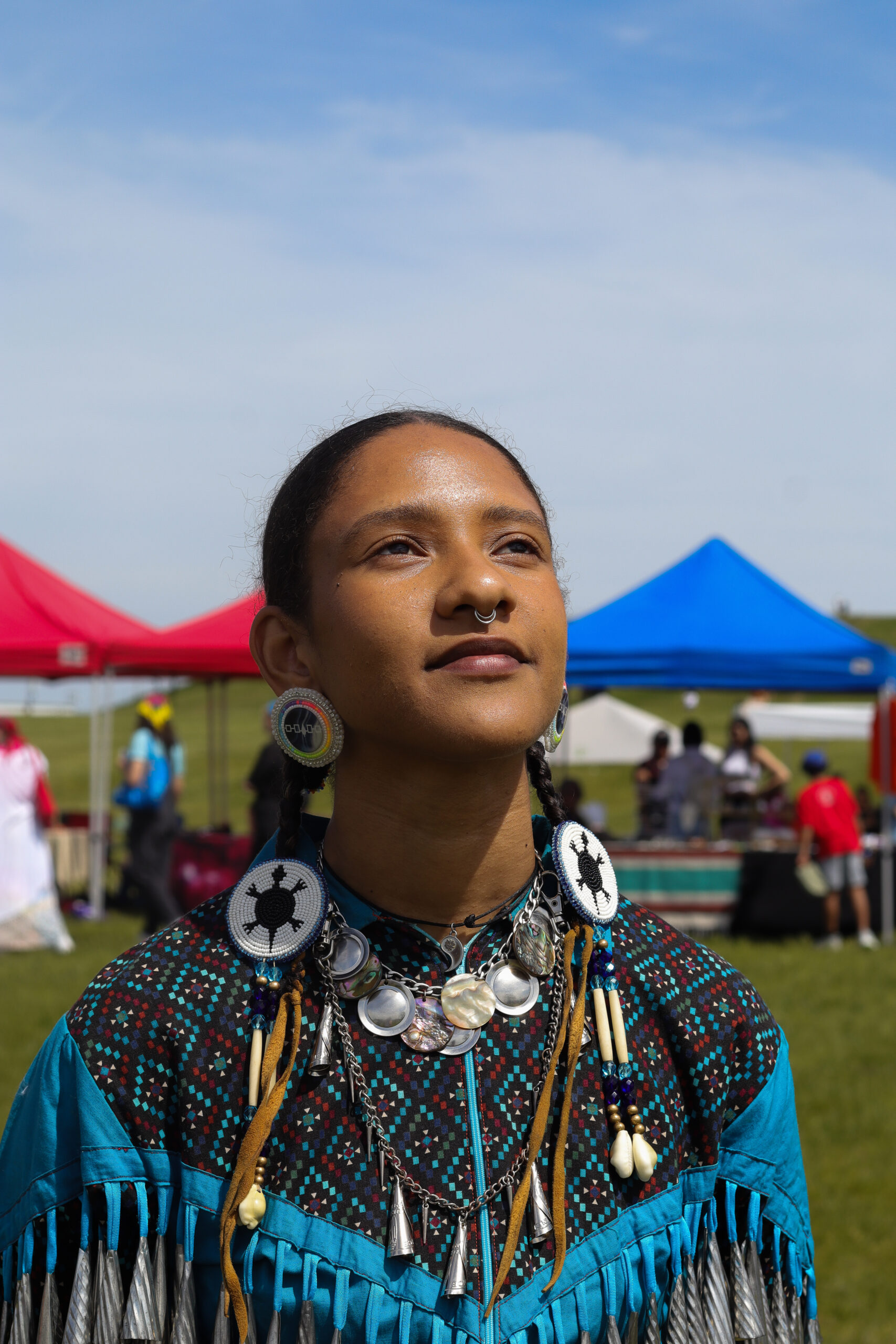
The modern powwow is a celebration of Indigenous cultures and community. But it is also a space for healing the generational wounds caused by forced oppression and assimilation. The revitalization of these ceremonies sparks hope — not just for the future generations of Indigenous Peoples, but for the future of Turtle Island.
In the Hopi Nation, the hoop dance is known as a medicine dance or a healing dance. “So the idea is that as we pass these hoops around our body we are giving out medicine to the people around us,” River Christie-White, who has been practicing the hoop dance for around 11 years, says.
Dancers tell stories by using their entire bodies to create flowing movements and designs with the hoops, some of which come from their individual creative expression and others from working with the spirits of Creation.
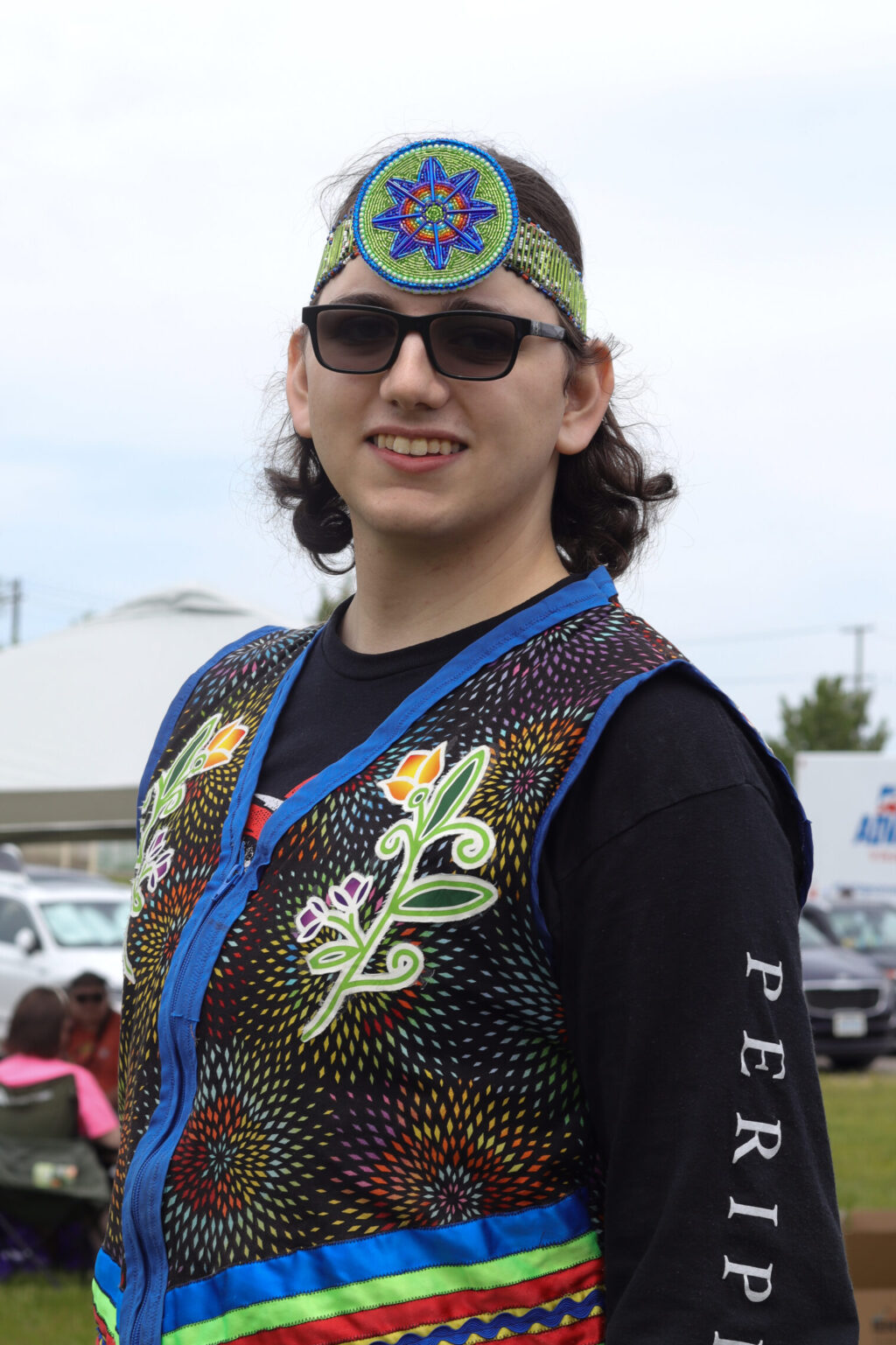
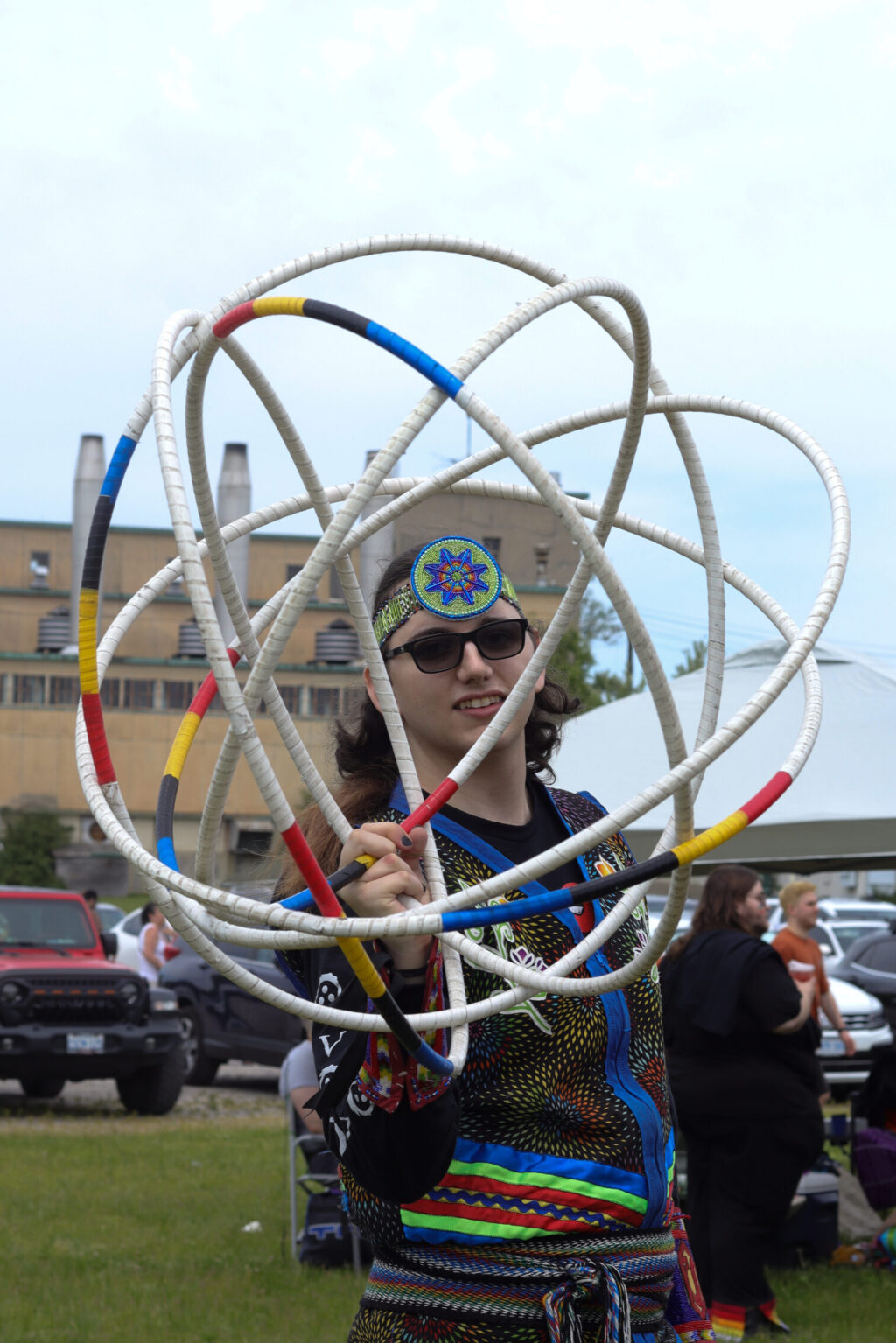
Christie-White’s regalia is another creative and cultural way to honour parts of their being. “I have Asperger’s syndrome, which is a form of autism. And a lot of the colours here, the green, the red, the yellow, all of those are different colours used to represent autism,” Christie-White says. Ten years ago, Christie-White started Hoops for Hope, which educates people about autism, neurodiversity and other intellectual differences.
The colours of their regalia also express part of Christie-White’s identity as a queer individual, evoking the pride flag and the idea of unity.
“The hoop dance is about unity and bringing things together. So I think about how those traditional practices come together in everyday life.”
Clothing, blankets and beadwork have transmitted information for a long time, Doxtater says. Hand-signing was a method of cross-cultural communication that allowed Indigenous people from many nations to communicate with others who spoke different languages.
“They couldn’t understand each other’s languages but they could understand the hand signing,” Doxtater says. He explains that physical items, including some floral and geometric designs featured in Anishinaabe beadwork, built upon and used the hand-signing symbols understood by speakers of many languages. “They would tell a story and you would be able to sign it.”
Before settler contact, Indigenous Peoples mostly made clothing out of the materials found in nature: buckskin, deer hide, sea beads, sinew and porcupine quills. Colours came from dyes that were similarly obtained from natural resources. During the fur trade period, Indigenous Peoples were introduced to new materials from European settlers.
“Throughout the fur trade, Indigenous textile artists are introduced to a whole new set of materials that they find fascinating,” Cory Willmott, a professor of anthropology at Southern Illinois University Edwardsville, says. “One of those things was colours.” She emphasises that the incorporation of these elements was deliberate. “They are choosing what resonates with their worldview, their traditional values and their aesthetic traditions.”.
Dyes and coloured ribbons were adapted into Indigenous fashions. Because of the cultural teachings that everything in creation has a colour, including our individual spirits, it became a pattern for colours featured in the designs on clothing and beadwork to be an expression of identity and oral history.
“It is indigenizing European materials into their own Indigenous fashions,” Willmott says.
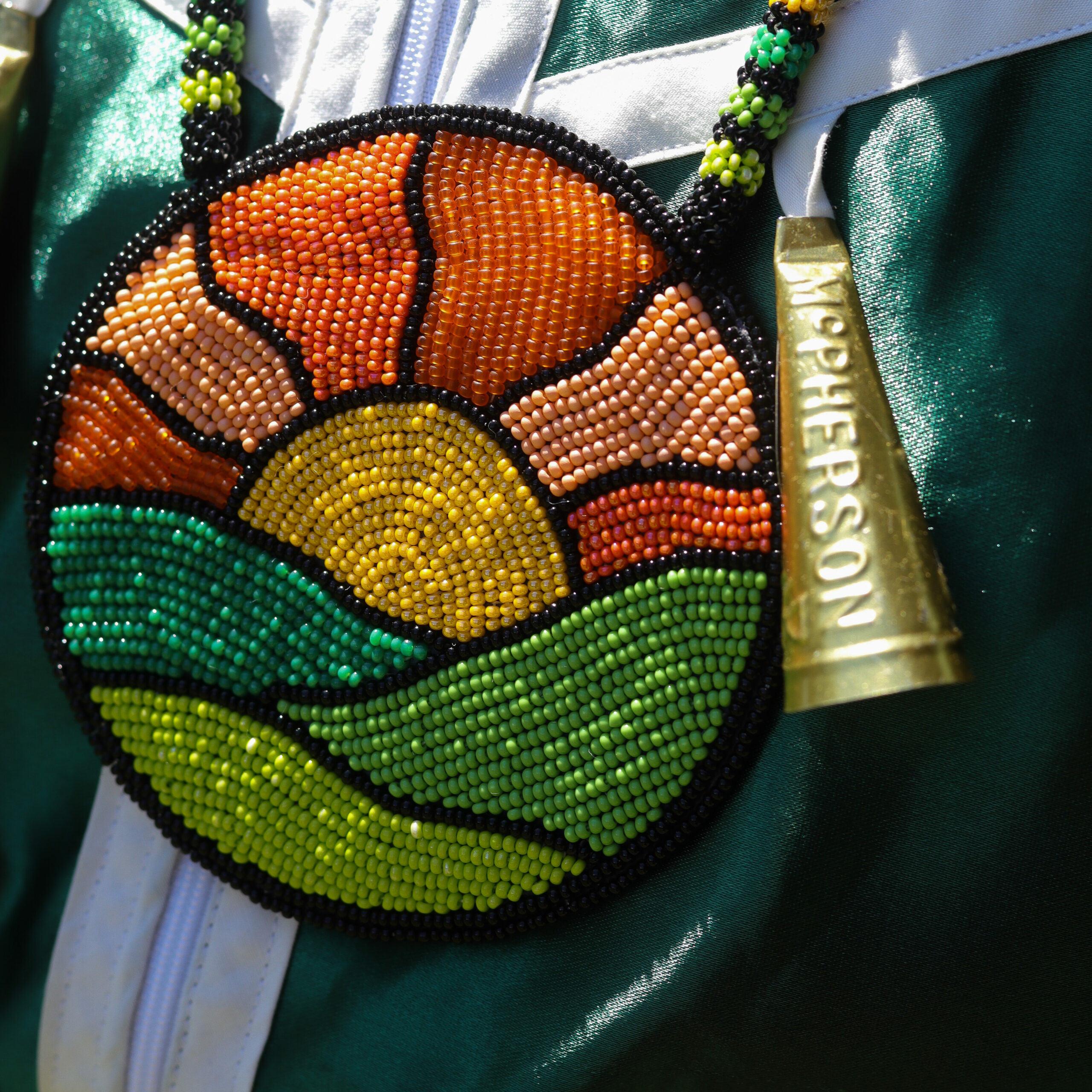
Though traditional elements like deer hide, sinew and quills are still used in some pieces on regalia, ribbons and other pieces of clothing are now usually made out of woven materials and sewn with thread. Faux feathers are also used alongside genuine feathers. Still, traditions are being passed down through regalia, which continue to be used to express history and personal identity.
Just over two years ago, I attended my first powwow. I didn’t grow up connected to my Anishinaabe community or cultural practices, and I was just a few years into my reconnection journey. I had so many questions about the different dances, the different styles of regalia.
As I have continued building my relationship with my community and my culture, I have had the privilege of receiving teachings about powwows, many of which have come from travelling on the trail. But I also challenged myself to learn while doing work in and with the community. For the last two summers, I have worked on the powwow planning committee at Toronto Metropolitan University.
While attending powwows, I’ve noticed a pattern. Often dancers are bombarded by people who take pictures of them in their regalia — a few told me this feels tokenizing, especially when picture-takers don’t even ask first. I’ve often wondered if people understood or even cared to understand what they were taking a picture of: if they miss the significance, value and respect that Indigenous people have for their regalia, and the layers of meaning and significance they carry.
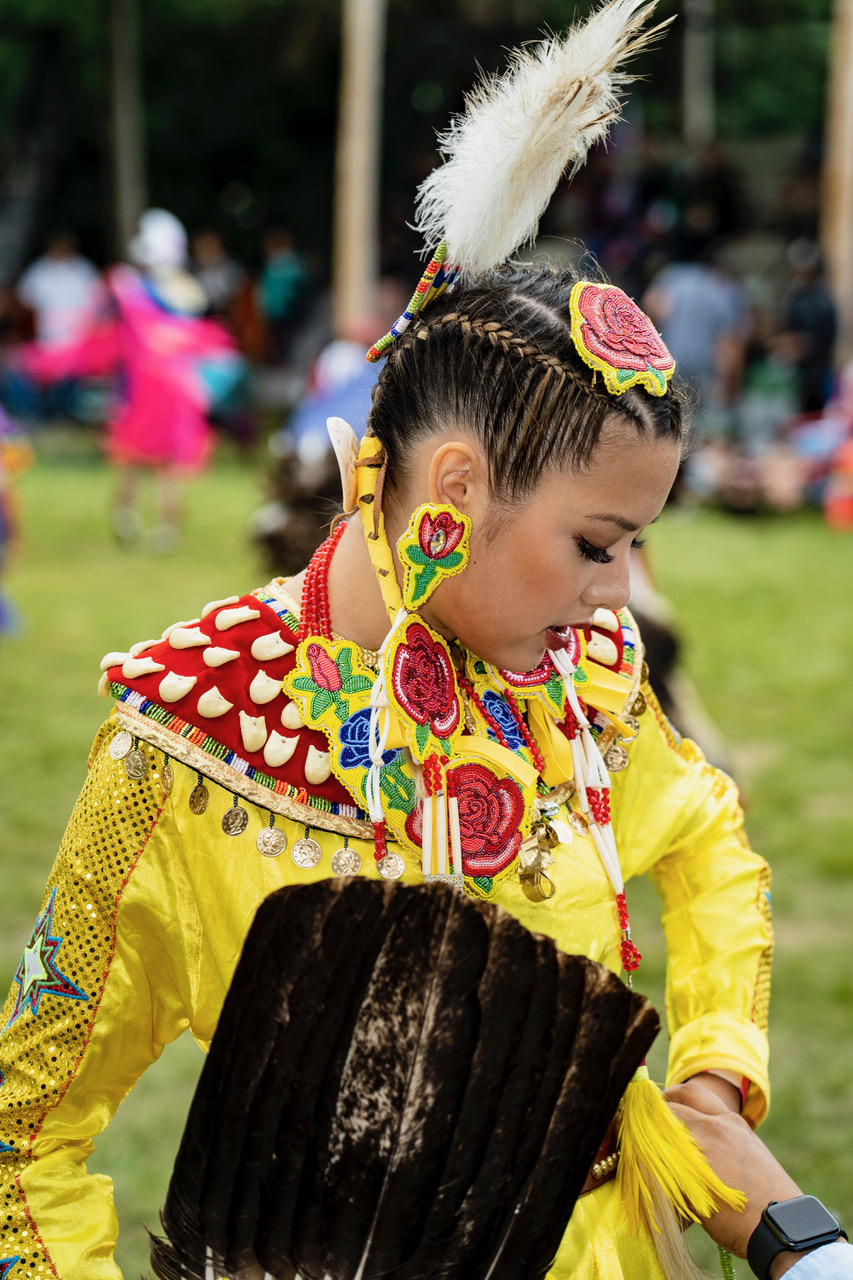
“Generations of regalia can be on a dancer,” Madison Noon, a member of Thunderchild Cree First Nation, who has been dancing the jingle style since she was a tiny tot, says. “My yellow beadwork is so important to me because it helped me understand the generation of my aunty and my late mushum. I am wearing my family’s legacy on me, without even knowing the depths of it.”
Traditional dancing has been an important part of Noon’s journey to becoming a professional dancer. She recently graduated with a bachelor degree in performance dance from Toronto Metropolitan University, and works as a dancer for the Toronto Raptors. “Powwow was my first dance world, so I always consider myself a jingle dress dancer and a powwow dancer first.”
Many Ojibwe communities have their own origin stories for the jingle dress dance. In the teachings that I have received, the dance appeared to a Medicine Man in his dreams, to help heal his ailing granddaughter. Some powwows include jingle dance specials that honour the stolen life of a missing or murdered Indigenous woman, or the children that attended residential schools.
“It’s very healing for me and for everyone else at the ceremony because the jingle dress dance is a healing dance,” Lauren Porter, a member of the Mississaugas of the Credit First Nation and the female head dancer at the 2024 Na-Me-Res powwow in Toronto, says.
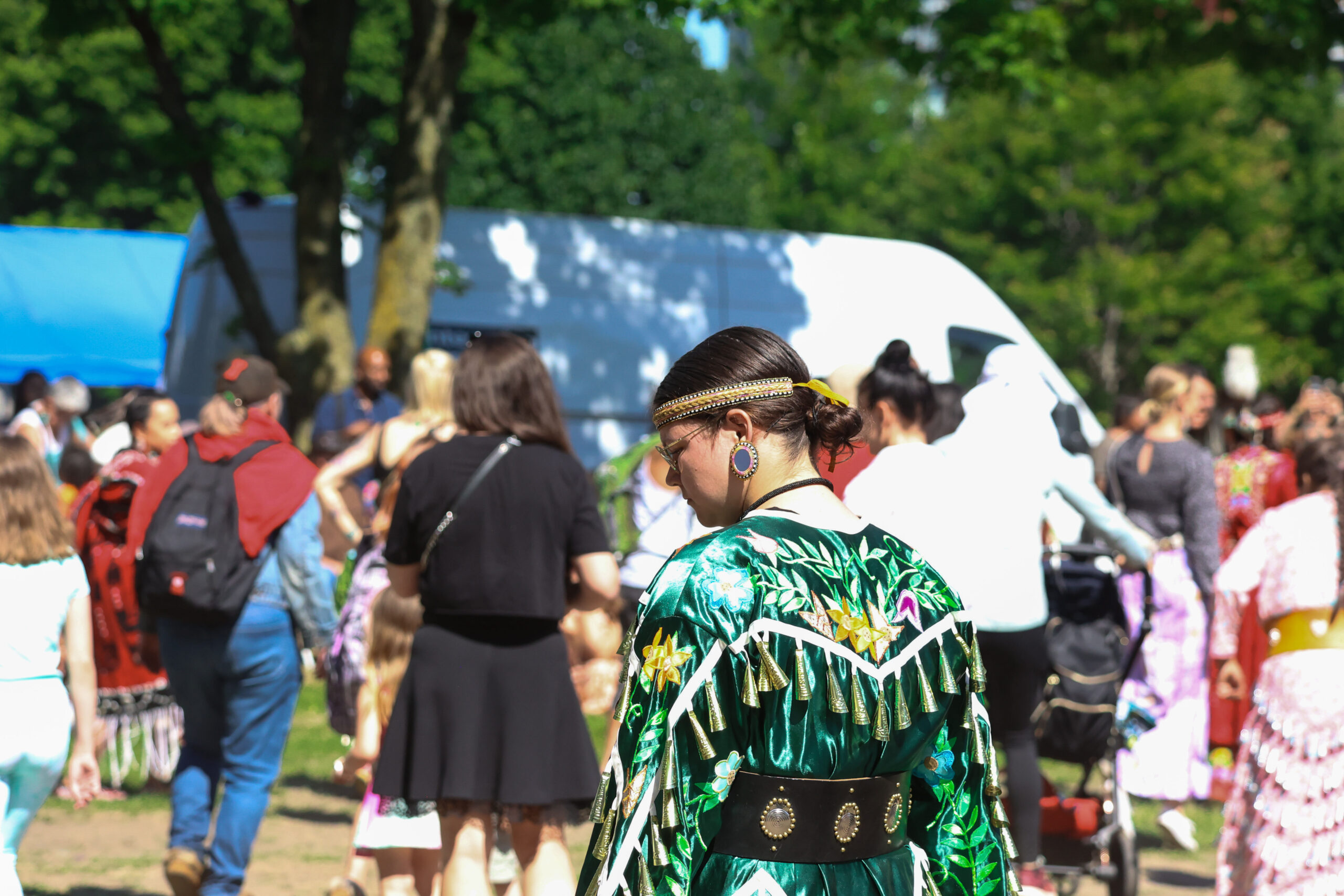
The distinctive jingle dress style was introduced after colonial contact, and uses new metals imported into Turtle Island by settlers. It features rows of cones that are typically made from the lids of Copenhagen brand snuff tobacco. As the dancer moves, the cones imitate the sound of rain. It’s one of the most beautiful sounds at the powwows — only war cries or moose calling competitions might top it.
Noon has trained in classical ballet, jazz, hip hop, contemporary, modern and street styles and around age eight, took a break from powwow dancing to focus on her passion for competitive dance.
But despite other connections to her culture and identity, and doing well in both school and in dance, Noon felt incomplete. “When you’re in a world like my classical dance world it’s demanding. And it’s hard on your spirit as an Indigenous person,” she says. “I realised it was powwow that I was missing.”
Before long, Noon was to get back in the circle. “When I dance jingle it heals my spirit. Because you’re dancing among your people and you’re in a space where you feel safe, and you’re celebrating culture.”
Get the inside scoop on The Narwhal’s environment and climate reporting by signing up for our free newsletter. On a warm September evening nearly 15...
Continue reading
115 billion litres, 70 years to fix, $5.5 billion in lawsuits

Climate change, geopolitics and business opportunities power a blue economy

10 billion litres of sewage are dumped into Winnipeg’s lakes and rivers each year. Some...
